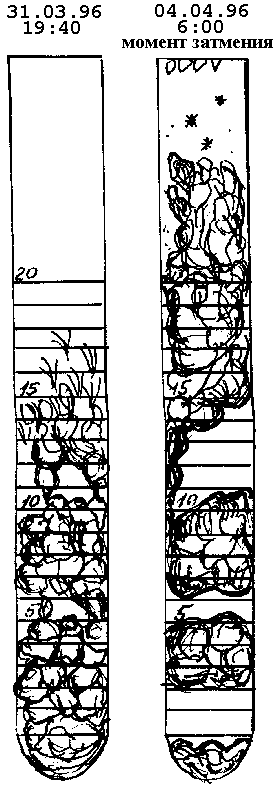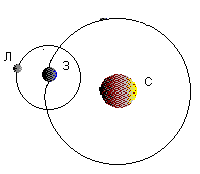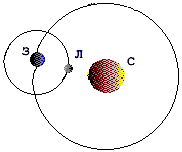



Sergey P.Fediaev
Observation Over Work of the Device "STORM GLASS"
(
Continuation, the beginning in N1/96)We continue the conversation which was began in N1/96. There were made two devices for these experiments. One was marked as O2GI and it had points across 0.1 ml. I irradiated it by the generator of "axion field" (GAF). Another one was marked as N367. These devices were filled with the same solution:
|
Camphor alcohol |
10% - 40 ml. |
|
Potash saltpeter (KNO3) |
4.2% - 10 ml. |
|
Ammonium chloride (NH4Cl) |
2.7% - 10 ml. |
|
The solution was divided into two parts. |
|
Irradiation of the device O2GI by the device GAF took place during 10 minute it has resulted in a little bit unexpected outcomes. In the case of irradiation during 5 minute there were changes in the top layer of sediment, but now there were changes in underlying layers. The character of changes was the same as in the first case that was reduction of volume or stage of crystallization.
The new experiment consisted in the following. I have doubled volume of NH4Cl in the test-tube O2GI either in the # 367 volume of KNO3, keeping initial concentration of solutions. In the both test- tubes the dregs has appeared, then it began to precipitate. But in the first test-tube it was considerably slower than in the second one. After an irradiation of both test-tubes by GAF during 5 minute volume of sediment has not appreciably changed, but density has insignificantly decreased. This process was more appreciable in the first test-tube.
There was more appreciable sediment as a shape of flakes in 0.5 hour after irradiation in the bottom parts of test-tubes. In first one it was approximately 11 ml, and in the second test-tube about 10 ml. The next day clean liquid has increased in the top parts of test-tubes, and the sediment at the bottom has become more precisely visible. The dissolution occurred not homogeneously per all volume, but there was division into layers. When I have moved devices to a warmer room and the dissolution went faster. I put both devices on the TV set by turn, but I have not noticed any changes because of it. In the process of dissolution of sediment division on stages of crystallization has become more appreciable. The complete disappearance of dregs in the device # 367 has taken place in five days. The sediment has made 7 ml. Irradiation by the device GAF during 5 min. has resulted in that fact that the sediment was divided into layers of 5ml of "flakes" and 2ml of "needles". In the same time there was about 5 ml of transparent liquid in the top part of device O2GI, 10 ml. of slightly turbid liquid and 9 ml of sediment. After irradiation the differentiation of sediment on stages of crystallization has become more appreciable. There was about 4 ml of "mass", 3 ml of "flakes" and 2 ml of "needle".
It was noticed that at change of a stage of crystallization pH varied within the limits from 0.5-1.0 in both devices. The crystals looked less precisely in test-tube with prevalence NH4Cl.
For continuation of experiments the devices were assembled, in one of which there was a solution of recommended concentration (see "Young Technician for Skilful Hands" N1, 1989), and in the other one the concentration was counted for 10 % of camphor spirit.
Mixture
|
Substances |
Recommended Solution |
New Solution |
|
Camphor |
7.7 ã. (12.2%) |
10% |
|
NH4Cl |
3.88ã. (6.1%) |
2.5 |
|
KNO3 |
5.83ã. (9.1%) |
4.4 |
|
alcohol |
63.78 |
60 |
The new devices have started to work in 7 days. pH was defined by indicated papers for photoreagents. pH of both devices has made 7. After an irradiation by GAF it has changed to 6.5. It was rather difficult to determine the exact meaning of that, because a scale for determination was rather rough.
In the period from 21.02.96 to 2.03.96 the observation have not brought anything new. The crystalline sediment showed to the strong wind and precipitation. On the 25 and 26 February there was snow; on the 28 and 29 of February was hoarfrost. Temperature of air was up to -30°C below.
In March the strong northeast wind basically blew, it was up to 5-6 wind forces. Temperature of air was up to -25°C below. There was frequent hoarfrost on ground and on trees that time. From 2.03.96 to 7.04.96 the crystals in the shape of "needles" and "leaves" became to gather in the top part of the control device, their volume was up to 10 ml.




From 2.03.96 to 31.03.96 sediment had rather dense mass, so I even thought that the device was deteriorated. From the 1 to the 4 of April sediment in the top part has started to dissolve and was up to 1-3ml. On the 4 of April the sediment almost completely has filled the test-tube. On 4.04.96 from 6.15 am to 6.25 am I observed a complete lunar eclipse. From 4.04 to 7.04 sediment now occurred (in the morning), now disappeared (in the evening). Its volume made 1-2ml. On the 7 and 8 of April there were "dots" and "starlets" which have occupied all volume from 20ml up to top. On the 9 and 10 of April there were light morning frost on the ground, on the 13 and 14 of April there was a rain, on the 15 and 16 - the dense fog, on the 17 of April was light morning frost on the ground. While the sediment in the control device occupied the top part of the test-tube, it was in the shape of "twigs" in experimental devices.
The results of observation from 28.02.96 to 7.04.96 allow assuming, that the Moon and Sun influence on the device "Storm-Glass". By the way, on 24.10.95 there was a complete solar eclipse. At that time device "laid in a faint", volume of sediment was less than usual though weather was cloudy and on the 25 of October there was snow and blizzard accompanied by ground wind, and on the 26 of October was blizzard.
How can influence the Sun and Moon to the device during eclipses? Let's try to consider a mutual location of the Sun, the Moon and the Earth at this time.

Gravitational fields of the Sun and the Moon compensate each other, therefore their influence weakens.

The gravitational fields are combined and their action amplifies.
From 4.04.96 to 7.04.96 sediment consisted of three parts: top part with volume of 1-2ml, middle part about 15 ml and bottom one with volume 2-3ml. From 8.04.96 to 13.04.96 there were 2 parts: top part about 15 ml and bottom part about 1-2ml. From 1.04.96 sediment has run up to the bottom of the test-tube. On 18.04.96 sediment has taken on the shape of leaves, its volume has decreased. The wind was southwest, the sky was less cloudy and there was not any atmospheric precipitation.
In March both experimental devices were placed in a ring magnet in turn on some days. This manipulation has not given appreciable effect, but it looked like the crystals become more friable, they have lost legibility, but the stage of crystallization have not changed.
It is noticed that when I opened devices for gauging of pH, they considerably reduced sensitivity for some time. This fact also took place at infringement of air-tightness of devices. It is possible that partial pressure plays a role in their work, which created by steams inside of test-tube. Maybe because of that fact it is recommended to shake up liquid 2 or 3 times per one year, and the vessel should be sealed or hermetically closed and cover with sealing wax, isn't it? The permeability of a vessel for light or other radiation should be provided with constant maintenance of a vessel in cleanliness.
There was not find out anything new from April 18 to May 16. The devices were carried out from a magnet. In several days the devices have come in an operating duty and started to fill by distinct crystals. The "twigs" started to occur more often at change of weather.
From the 4 of May to the 5 of June crystals in the shape of "leaves" and "needles" started to occur and to disappear in the top part of the test-tube of the control device. On the 16 of May volume of sediment in top has amounted to a maximum and has made 7 ml.
From the 4 of May to the 8 of May it appeared in the morning and completely disappeared by the evening. On the 9 and 10 of May it has been in the morning and in the evening, its volume made 1-7ml. From the 18 to the 25 of May it appeared only in the morning, but from the 25 to the 27 of May this fact took place in the morning and in the evening. From the 25 of May to the 31 of May it has been only in morning and during a day. From the 1 of June to the 5 of June sediment in the top part of the test-tube was only in the morning.
From the 4 of June to the 7 of June there was hot dry and less-cloudy weather. A wind was very weak (about 1 - 2 numbers) of southern and western direction. In the morning of the 7 of June at 7 o'clock in the morning the sediment in the shape of flakes in the bottom has amounted to 17 - 18 ml, in the top part - about 5 ml. In the top part "leaves" became to fall, in the middle part "starlets" and "dots" occupied 10 ml. The supervision from the 4 of May to the 7 of June have shown that if the condition of the device really depended on the Sun, Moon and Earth, but not only from weather, so the solar activity has probably changed these days. Whether the influence of stars so essentially or not must get clear up more or less after a lunar eclipse on 27.09.96 and solar eclipse on 9.03.97. But the new surprises could appear.
For now I can only assume that in the second decade of June are possible: reduction of temperature, strengthening of wind up to 5-7 numbers, cloudy weather, long rains or hailstones. The prevalence of southwest, western and northeast winds is probable.
(Continuation in
N4/96)Translation of M. Dvoretskaya
We express our gratitude to mr. James D Mann for taking part in preparing of this article.